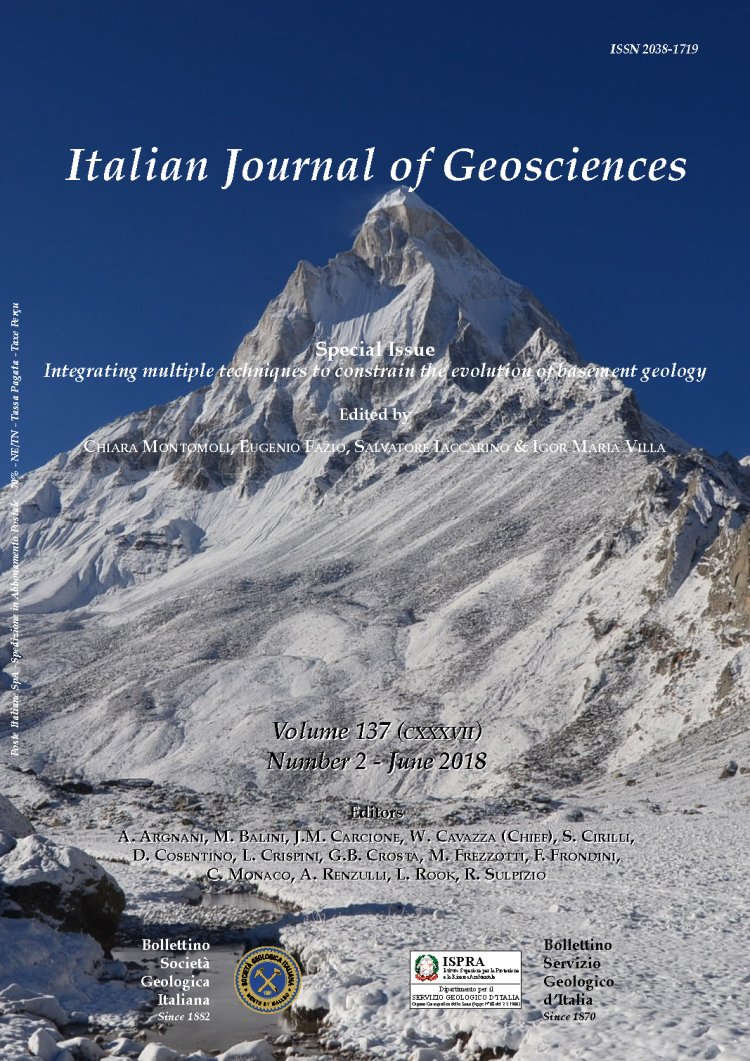
Estimating P-T metamorphic conditions on the roof of a hidden granitic pluton: an example from the Mt. Calamita promontory (Elba Island, Italy)
Alfredo Caggianelli (1), Martina Zucchi (1), Caterina Bianco (1), Andrea Brogi (1) & Domenico Liotta (1,2)
(1) Dipartimento di Scienze della Terra e Geoambientali, University of Bari, Via Orabona 4, 70125 Bari, Italy.
(2) CNR IGG, via G. Moruzzi, 1, 56124 Pisa, Italy.
Corresponding author: alfredo.caggianelli@uniba.it.
DOI: https://doi.org/10.3301/IJG.2018.11
Volume: 137 (2018) f.2
Pages: 238-253
Abstract
The metamorphic basement (i.e. Palaeozoic micaschists, Porto Azzurro Unit) cropping out in the Mt. Calamita promontory, in the southeastern Elba Island, represents the roof of the mostly unexposed late Miocene Porto Azzurro granite. A thermobarometric study was performed on micaschists and interlayered amphibolites to constrain P-T conditions during contact metamorphism. Adopted methods were based on P-T grids, conventional thermobarometry and analysis
of fluid inclusions. It was found that the basement was originally located at a depth of 6.5 ± 1.3 km and that the peak metamorphic conditions were close to the muscovite dehydration reaction in micaschist. Therefore, small differences of temperatures conditioned the presence or absence of K-feldspar in the eastern and western side of the Mt. Calamita promontory, respectively. A maximum peak
temperature of c. 625 °C was estimated by amphibole-plagioclase thermometry in amphibolite. Fluid inclusions in micaschist quartz lenses document significant episodes of fluid circulation during the cooling history of the metamorphic aureole. Finally, a conductive thermal model was built up to reproduce the thermal evolution during the contact metamorphic event and following cooling. Simulated temperatures resulted significantly lower than the observed peak values. This discrepancy is explained as the effect of the localized heat advection in zones affected by infiltration of magmatic fluids and by the intrusion of numberless felsic dykes.
Keywords
Get Full Text Supplementary Material